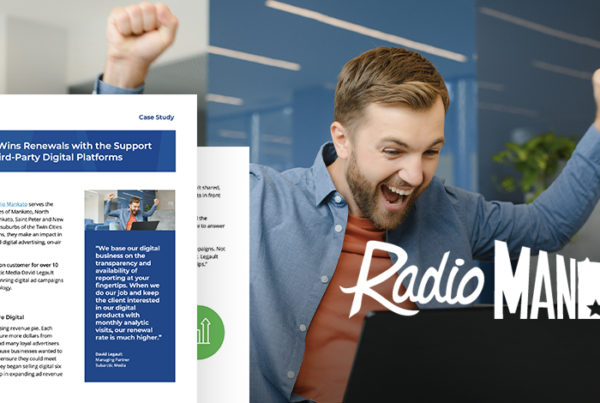Local radio advertising remains a strong channel to reach and engage audiences. Most local businesses invest in it because it’s a proven creator and driver of purchase intent. However, radio ad revenue has been falling for years. In 2025, the medium will actually see a slight increase. Most attribute companies’ reduced spending to allocating it to other tactics, but radio still has considerable value as part of a campaign. It may be time to pivot the message back to what has always made radio so appealing — it’s local.
Localism or Scale?
Lately, there has been a trend toward eliminating localism in the radio landscape. Digital radio streams don’t have that local appeal or characteristic. It’s a way for stations to scale content to multiple markets, but when that happens, localism is gone.
Listening via digital radio is increasing, with 75% of Americans 12 and older using this channel monthly. Digital radio is a channel that has value and often includes listeners in younger generations. However, AM/FM radio listening still commands the top spot for ad-supported audio. According to Edison Research, AM/FM radio reach accounts for 74% of ad-supported audio listening each day.
In traditional listening, localism is a strong differentiator and driver of ad buying. Businesses use radio because it reaches their potential customers.
Localism may be the most important part of boosting ad revenue now and in the future. So, how do you ensure it stays part of the message?
Being Local and Trustworthy Is Radio’s Competitive Edge
We’ve discussed the geography of local radio — it’s the ability to communicate with listeners who need the products and services of advertisers. It’s a way to have an immediate connection with someone driving by their business every day.
Localism in advertising is also about understanding the nuances of your city. Not everyone has insight here like you do. Local also applies to every market, even the biggest ones. Maybe it’s even more critical in these cases, where cities have neighborhoods with their own cultures and history. People notice this and appreciate it.
It’s not only the businesses in your area that can be localized — national brands can, too, and they should. National restaurant chains often have localized menus, and big-box stores have different products depending on the city.
Being local and knowing the market is the value you provide to any advertiser wanting to target it. But there’s more to being local, and it’s about trust.
Across all types of media, there are varying levels of trust, which is where radio shines. Research supports this “trust halo” for radio. Consumers connect with personalities’ authenticity and recognize a station’s commitment to their communities. As a result, they listen to and trust radio ads more than any other medium.
Radio outperforms the latest and greatest tactics on this principle, which is very meaningful to local businesses. They want to cultivate that same kind of trust with customers.
Local Radio Has Considerable Value in the Advertising Ecosystem
Don’t let anyone tell you radio is a dinosaur. The facts tell us that listeners are still tuning in and that it’s a channel that delivers impact across the sales funnel. The industry is evolving, which is good for you and your advertisers. Reminding them of why local matters is a story that’s never going to change.
Explore how the media industry is changing in our new content experience, The Evolution and Resilience of the Broadcast Media Industry: From Dinosaurs to Birds.







